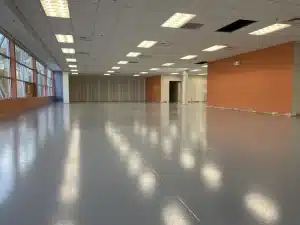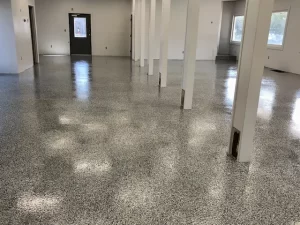Introduction
When you’re searching for ‘urethane floor’, you’re likely looking for a durable, cost-effective, and environmentally friendly flooring option that won’t give you a headache over maintenance or wear and tear. Here’s the quick answer to save you some reading time:
- Durability: Urethane floors are incredibly tough, making them suitable for high traffic areas.
- Resistance: They resist chemicals, moisture, and thermal shock, keeping their appearance over time.
- Eco-Friendly: Their longevity means less frequent replacements, aligning with sustainable building practices.
- Versatile Applications: Perfect for industrial settings, commercial kitchens, healthcare facilities, and more.
For those who value simplicity, durability, and sustainability in building materials, urethane flooring emerges as a prime candidate. It meets the complex needs of modern construction without compromising on ecological principles.
This flooring type has earned its stripes in demanding environments like food processing plants and hospitals but is equally at home in a commercial setting. Its robust nature combats the rigors of heavy machinery and high foot traffic, while its seamless installation thwarts bacteria growth, making it an ally for clean, healthy spaces.
As an environmentally-conscious architect or builder, understanding the intersection of aesthetics, functionality, and sustainability is your daily bread. Urethane flooring not only stands up to this trio of needs but elevates them, offering a solution that satisfies clients and the planet alike.

Understanding Urethane Flooring
When we dive into urethane flooring, we’re looking at a solution that brings together durability and flexibility in a way few other flooring options can. Let’s break it down into simple terms so you can understand why it’s such a popular choice for so many settings.
Polyurethane: The Core
At the heart of urethane flooring is polyurethane. This is a type of plastic—you might have seen it in everything from your refrigerator to your car’s seats. But when we use it in flooring, it’s because it’s incredibly tough. It’s made by mixing two main ingredients that react and create a solid, durable surface.
Thermosetting Polymer: The Science Bit
Polyurethane is a thermosetting polymer, which sounds complicated, but here’s what it means: once it has set, it’s set for good. You can’t melt it down or reshape it. This is great for flooring because it means it won’t soften under high temperatures. It’s part of what makes urethane floors so durable.
Durability: Built to Last
One of the big reasons people choose urethane flooring is its durability. It’s tough enough to handle heavy foot traffic, machines rolling over it, and the occasional dropped tool or chemical spill. Whether it’s a busy hospital corridor, a manufacturing plant, or a commercial kitchen, urethane flooring can take a beating and keep looking good.
Flexibility: More Than Just Tough
But it’s not just about being hard-wearing. Urethane flooring is also flexible. This might sound counterintuitive—how can something be both tough and flexible? But think of it like a gymnast: strong but able to bend and stretch without breaking. This flexibility means that urethane flooring can absorb impacts and resist cracking, which is especially useful in places where the floor might have to deal with temperature changes or heavy loads.
In short, urethane flooring is a smart choice for almost any space that needs a floor that’s both tough and flexible. It’s built on a foundation of polyurethane, a material known for its durability and resilience. Thanks to its thermosetting nature, it’s a permanent, reliable solution that won’t let you down, even under tough conditions. Whether you’re managing a high-traffic retail space or outfitting an industrial facility, understanding these key aspects of urethane flooring can help you make an informed decision that meets your needs now and in the future.
Epoxy vs. Urethane Flooring
When it comes to choosing the right flooring for your space, compare your options. Let’s dive into how epoxy and urethane floors stack up against each other in several critical areas.
Chemical Resistance
- Epoxy Flooring: Good for resisting commercial cleaners and some chemicals. However, it can struggle with harsher substances.
- Urethane Floor: Excels in this area. It stands strong against a wide range of chemicals, making it ideal for places with potential for spills or heavy cleaning, like labs or food processing areas.
Temperature Resistance
- Epoxy: Can handle moderate temperature changes and is suitable for areas like commercial kitchens.
- Urethane: Shines in environments with extreme temperature shifts. Its thermal shock resistance is top-notch, perfect for areas that undergo hot washdowns or have cold storage requirements.
Moisture Resistance
Both types offer moisture resistance, but there’s a distinction:
- Epoxy: Provides a solid moisture barrier but may not be as effective in extremely damp areas.
- Urethane: Offers superior moisture resistance, thanks to its seamless nature. It’s the go-to for environments where water is a constant factor.
Strength and Flexibility
- Epoxy: Known for its durability and strength, making it a good choice for high-traffic areas.
- Urethane: While also strong, urethane brings an added benefit of flexibility, absorbing impacts without cracking, which is crucial in spaces with heavy machinery.
Texture
Both flooring types can be customized for slip resistance, but:
- Epoxy: Tends to have a hand-troweled texture, which can become brittle over time.
- Urethane: Offers a smoother finish that remains consistent throughout its life, making it suitable for a wide range of applications.
UV Sensitivity
- Epoxy: Can yellow or fade when exposed to sunlight.
- Urethane: Has high UV resistance, maintaining its color and integrity even in sunlit areas.
Installation Time and Costs
- Epoxy: May seem less expensive upfront but requires more time for installation and more frequent maintenance, which can add up.
- Urethane: Quick to install, often over a weekend, and with its long lifespan and minimal maintenance needs, offers better long-term value.
In summary, while both epoxy and urethane flooring have their merits, urethane floors tend to offer superior flexibility, durability, and resistance to chemicals, moisture, and temperature extremes. They also provide better long-term value due to their longevity and lower maintenance requirements. This makes urethane flooring an excellent choice for areas that face harsh conditions or require stringent cleanliness standards.
Next, we’ll explore the advantages of urethane flooring in more detail, helping you understand why it might be the right choice for your project.

Advantages of Urethane Flooring
When it comes to choosing the right flooring for your space, urethane flooring stands out for its remarkable set of benefits. Let’s dive into what makes urethane flooring a top choice.
Abrasion Resistance
One of the standout features of urethane flooring is its ability to resist wear and tear. High-traffic areas can quickly show signs of use, but urethane floors hold up exceptionally well against abrasion. This durability means your floors will look newer for longer, reducing the need for frequent replacements or repairs.
UV Resistance
Sunlight can be harsh on floors, causing colors to fade and materials to degrade over time. However, urethane flooring boasts excellent UV resistance, ensuring that the vibrant colors and integrity of the floor remain intact, even in spaces flooded with natural light. This makes it an ideal choice for areas with large windows or outdoor access.
Color Retention
Alongside resisting UV damage, urethane floors are known for their solid color retention. This ensures that the floor remains visually appealing throughout its lifespan, maintaining the aesthetic appeal of your space.
Quick Installation
Time is often of the essence in construction and renovation projects. Urethane flooring offers a quick installation process compared to other flooring types. It can be applied over a weekend, minimizing downtime for businesses and swiftly transforming spaces with a new, durable surface.
Moisture Resistance
Water damage can be a significant concern for many flooring materials, but urethane floors provide excellent moisture resistance. Their seamless nature prevents water from penetrating the surface, protecting the subfloor and reducing the risk of mold and mildew growth. This characteristic is especially beneficial in environments where spills are common or damp conditions prevail.
Chemical Resistance
In environments where chemical spills are a possibility, urethane flooring shows its strength. It is resistant to a wide range of chemicals, meaning spills from oils, acids, and other substances won’t damage the floor. This chemical resistance is crucial for places like laboratories, manufacturing plants, and any area where chemical exposure is a concern.
In summary, urethane flooring offers a combination of durability, aesthetic appeal, and practical benefits that make it a superior choice for a wide range of applications. Its resistance to abrasion, UV light, and chemicals, along with its quick installation and excellent moisture protection, provide long-term value and peace of mind for property owners and managers. Whether you’re upgrading an existing space or selecting flooring for a new project, the advantages of urethane flooring are clear.
Installation Process and Maintenance
When it comes to installing a urethane floor, the process is as crucial as the material itself. Let’s dive into how to ensure your urethane flooring is set up for success from day one, and how to keep it looking its best for years to come.
Surface Prep
The first step in the installation process is preparing the surface. This is not a corner to cut. A clean, dry, and properly prepped surface is vital for the urethane to adhere correctly and perform as expected.
- Cleaning: The concrete floor must be free of any dirt, grease, or previous coatings. This often involves mechanical grinding or shot blasting to get down to a clean surface.
- Repairing: Any cracks or damage in the concrete should be repaired before the urethane application.
- Drying: The floor must be completely dry. Urethane is sensitive to moisture, so any dampness can affect its curing and adhesion.
Curing Time
Urethane flooring dries and cures faster than some alternatives, like epoxy, but patience is still key.
– Initial Dry: After application, urethane coatings will need at least 24-48 hours before they’re dry to the touch.
– Full Cure: For the coating to fully cure and achieve its final hardness and chemical resistance, it can take up to 7 days. During this time, it’s crucial to keep the area free from traffic and spills.
Maintenance Tips
Once your urethane floor is installed and cured, keeping it in top condition is straightforward with these maintenance tips:
– Daily Cleaning: Sweep or vacuum daily to remove dirt and debris that can scratch the surface.
– Spot Cleaning: Wipe up spills as soon as they happen to prevent staining.
– Mopping: Use a damp mop with a mild cleaner for regular cleaning. Avoid harsh chemicals that can damage the floor’s finish.
Cleaning Protocols
For more intensive cleaning, follow these protocols to ensure your floor remains in pristine condition without damage:
– Deep Cleaning: Occasionally, you may need a more thorough clean. Use a manufacturer-recommended cleaner and follow the instructions carefully.
– Avoid Harsh Chemicals: Urethane floors are chemical resistant, but using harsh cleaners can dull the finish over time. Stick to recommended products.
– Professional Help: For stubborn stains or damage, consider hiring a professional cleaner experienced with urethane floors. They can often repair minor damage without a complete re-coating.
By following these steps for installation and maintenance, your urethane floor will maintain its durability, appearance, and performance for years to come. Regular care not only keeps the floor looking great but also protects your investment, ensuring that your space remains functional, safe, and attractive. The key to a long-lasting urethane floor is proper preparation, patience during curing, and consistent maintenance.
Choosing the Right Urethane Flooring for Your Space
Selecting the best urethane flooring for your specific needs might seem daunting, but it doesn’t have to be. Whether your space is commercial, industrial, or subject to high traffic, there’s a urethane flooring solution that fits. Let’s dive into how to choose the right option for different environments.
Commercial Uses
For commercial spaces like retail stores, offices, or restaurants, aesthetics and durability are key. Urethane floors shine in these settings due to their:
- Visual Appeal: They offer a variety of finishes and colors, enhancing your brand’s look.
- Ease of Maintenance: Simple cleaning protocols keep the space looking professional.
- Durability: Resists the wear and tear of daily foot traffic.
Industrial Applications
In industrial settings, such as manufacturing plants or warehouses, the flooring must withstand heavy machinery, chemical spills, and constant activity. Urethane flooring is ideal because it offers:
- Chemical Resistance: It stands up to spills without degrading.
- Impact Resistance: Protects against damage from dropped tools or equipment.
- Moisture Resistance: Prevents water and other liquids from penetrating, which is crucial in spaces prone to spills.
High Traffic Areas
Areas that see a lot of foot traffic, including public buildings, hospitals, and schools, need flooring that can maintain its integrity and appearance over time. Urethane floors are perfect for these areas due to their:
- Abrasion Resistance: Keeps floors looking new, even in high-traffic conditions.
- Quick Installation: Reduces downtime, a critical factor in busy environments.
- Hygiene: Easy to clean and maintain, supporting public health.
FDA/USDA Regulated Facilities
For spaces that must comply with strict regulations, such as food preparation areas or pharmaceutical manufacturing, urethane flooring is an excellent choice. It meets the stringent requirements of these facilities by offering:
- Seamless Surface: Limits places where bacteria and contaminants can hide.
- Chemical and Moisture Resistance: Essential for areas that are frequently sanitized.
- Durability: Withstands the harsh conditions of industrial cleaning processes.
When choosing urethane flooring, consider the specific demands of your space. Think about the level of traffic, exposure to chemicals, and any regulatory standards that must be met. By aligning the flooring’s properties with your needs, you ensure a solution that’s not only durable and practical but also enhances the functionality and appearance of your space.
The right flooring can dramatically impact the efficiency, safety, and aesthetics of your environment. If you’re unsure which urethane flooring option is best for your space, consulting with a professional can provide valuable insight and help you make an informed decision.
By considering these factors, you’ll be well on your way to selecting a urethane floor that will serve your needs effectively, maintain its durability, appearance, and performance for years to come. Regular care not only keeps the floor looking great but also protects your investment, ensuring that your space remains functional, safe, and attractive. The key to a long-lasting urethane floor is proper preparation, patience during curing, and consistent maintenance.

Frequently Asked Questions about Urethane Flooring
When considering a new floor, it’s natural to have questions. Urethane flooring, with its durability and versatility, often comes up as a top choice. Let’s dive into some of the most common questions to help you understand if it’s the right option for you.
What is Urethane Flooring?
Urethane flooring is a type of resinous flooring made from urethane, a polymer compound. It’s known for its strength, durability, and flexibility, making it an excellent choice for areas that see a lot of foot traffic or heavy use. It’s also resistant to chemicals, moisture, and UV light, which means it won’t fade or yellow in the sun. This makes urethane floors a popular choice in commercial and industrial settings, as well as in homes.
Which is Better: Epoxy or Urethane?
The answer to this question depends on your specific needs. Both epoxy and urethane floors have their advantages.
- Epoxy is known for its hardness and chemical resistance, making it ideal for areas that might be exposed to spills or chemicals. However, it can be sensitive to UV light and may yellow over time. It’s also less flexible, which means it can crack if the concrete beneath it moves or shifts.
- Urethane, on the other hand, is more flexible and UV resistant, making it less likely to yellow or fade. It’s also more resistant to abrasion and can handle extreme temperatures better than epoxy. This makes urethane floors a great choice for areas that see heavy traffic, significant temperature swings, or direct sunlight.
In summary, if your main concerns are chemical resistance and initial cost, epoxy might be the way to go. But if you’re looking for longevity, flexibility, and UV resistance, urethane could be a better choice.
Is Epoxy or Polyurethane Better for Floors?
Again, this depends on your requirements. Polyurethane (another term for urethane) floors are generally more flexible, UV resistant, and durable under extreme conditions than epoxy floors. They can also be applied over existing epoxy floors, making them a cost-effective and time-saving option for upgrades.
However, epoxy floors may offer better resistance to certain types of chemicals and hardness, which could be beneficial in environments where this is a priority.
The choice between epoxy and polyurethane should be based on the specific demands of your space. Consider factors like exposure to sunlight, chemical use, temperature fluctuations, and traffic levels when making your decision.
Regardless of which option you choose, working with a professional flooring contractor can ensure that your new floor meets your needs and expectations. They can offer tailored advice and ensure that your floor is installed correctly, providing you with a durable, attractive surface that will last for years to come.
Conclusion
When we talk about sustainable design in the context of urethane floor coatings, we’re highlighting an approach that goes beyond mere aesthetics and functionality. It’s about creating spaces that are not only durable and beautiful but also have a positive impact on our environment. Urethane flooring stands out in this regard due to its longevity, reduced need for replacements, and its compatibility with eco-friendly practices.
At Topcoat Services, our commitment to sustainable design is woven into every project we undertake. We understand that the choices we make today shape our tomorrow. That’s why our urethane floor coatings are designed to meet the highest standards of performance without compromising on environmental responsibility. Our products are formulated to reduce VOC emissions, enhance energy efficiency through their reflective properties, and utilize bio-derived materials where possible.
Choosing a urethane floor means investing in a solution that not only looks great and performs exceptionally under the toughest conditions but also aligns with the ethos of sustainability. Whether it’s for a commercial space, an industrial facility, or a high-traffic area, our urethane flooring options offer the durability and aesthetics you desire while contributing to a healthier planet.
We invite you to explore how our high-performance urethane flooring solutions can transform your space. Our team at Topcoat Services is here to guide you through every step of the process, from selection to installation, ensuring that your flooring not only meets but exceeds your expectations.
In conclusion, by choosing Topcoat Services for your urethane flooring needs, you’re not just selecting a flooring solution. You’re making a statement about your commitment to quality, durability, and environmental sustainability. Let us help you make a positive impact on your space and the planet.









